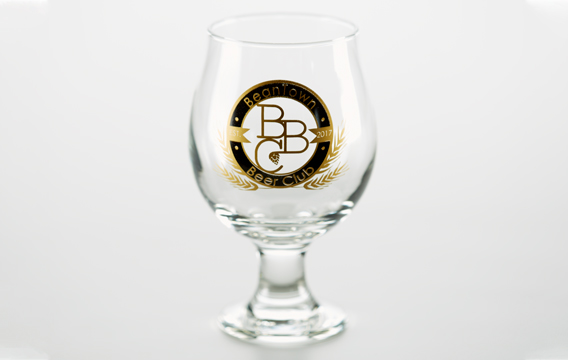- Equipment
- Inks & Supplies
- Services
- Applications
- Tagless
- Resources
- About Us
- Contact Us

Glass is a material of remarkable quality, among them being its 100% recyclability. Even more astonishing, glass can be recycled indefinitely without any loss in quality or purity—something few other beverage packaging materials can lay claim to. The recycling process for glass involves melting it at extremely high temperatures, where sand, soda ash, and limestone come together to form brand-new glass. It should be noted that recycled glass is often an ingredient in the recipe for new glass!
Soda lime is the most common type of glass, accounting for about 90% of glass products on the market. It typically makes up windowpanes which are flat glass, and glass containers for food storage and the like. Soda lime is a mixture of soda lime and sand.
Borosilicate is another type of glass made up of soda lime, sand, and boron. This type of glass has excellent heat resistance so items that are constantly sitting over a fire or in an oven will not melt or crack. Borosilicate glass items range from test tubes and beakers to Pyrex.
Tempered glass is unique in that when broken, it shatters without breaking into tiny little shards. Certain countries require establishments to use this type of glass as a safety precaution. Common applications include car windows, shower doors, screen protectors, and even bulletproof glass.
For surface coatings, there are two popular methods that manufacturers use either before and/or after the annealing process (slow cooling of glass) to ensure the glass is protected. The two methods are hot end coating and cold end coating.
Hot end coating is used on all glass bottles, including wine, soda, spirits, and even beer bottles, before the annealing process. Once the glass is formed, a thin tin-chloride film is applied onto the glass, making the surface more resistant to breakage. This coating is sprayed onto the inside and outside of the bottle. Hot end coating protects consumers from the glass shattering, which may occur because of a buildup of pressure due to carbonation.
Cold end coating is used for all other types of glass to protect items from scratching and scuffing during shipping. This type of coating is either a spray or a vapor that is applied after the annealing process. There are multiple types of cold end coatings including water soluble, water insoluble, polyethylene or fatty acid types.
Pad Printing, a reliable and versatile printing technique, allows the transfer of two-dimensional images onto three-dimensional objects. This process involves the utilization of an etched plate, often referred to as a cliche, in tandem with a pad to facilitate the seamless transfer of the image.
When it comes to pad printing on glass, the process doesn’t differ much from printing on other substrates. The differences really come down to the pad, the ink, and the tooling.
As you embark on the initial discussions to determine the ideal machine for your specific requirements, the conversation will naturally turn to the images you intend to print. Drawing upon our extensive decades-long expertise, we will provide expert guidance in selecting the most suitable pad for your graphics. In broad terms, for straightforward logo designs, a round or rectangular pad will suffice. However, if your aim is to achieve expansive wraparound prints on glassware, it is advisable to opt for a hollow pad.
When it comes to achieving exceptional adhesion on glass surfaces, look no further than the CG Series Pad Printing Ink. Crafted with specialized formulations, this ink is tailor-made for optimal adhesion on glass. What sets the CG Series Ink apart is its 2-component composition, designed to accept a hardener. Hardeners, which act as catalysts, are added to the ink to enhance abrasion resistance and overall durability. Typically, the recommended amount for adding a hardener is about 10% of the ink’s weight.
To learn more please visit: CG Series Pad Printing Ink
When pad printing on drinkware, it’s crucial to assess its resistance to dishwasher cycles. To achieve this, the final phase of the pad printing process on glass involves heating the glass, which effectively seals the bond between the pad printing ink and the product.
There is a diverse array of glass applications ideally suited for embellishing with one- or two-color logos. Whether it’s pad printing on shot glasses, pint glasses, barware, or similar items, the possibilities are extensive. While mugs with handles cannot be printed using cylindrical printers, pad printers can effortlessly brand glass beer mugs. Don’t hesitate to explore branding opportunities for rocks glasses, highball glasses, and any other drinkware vessel with straight or slightly tapered walls that cross your path. Another increasingly popular application for pad printing on glass includes glass tincture bottles for the cannabis industry, as well as containers for CBD. The opportunities do not end there, if you have a glass application to brand, contact us today.
To get started today, visit our Pad Printing Machines Page. The selector on the left hand side under “Find the Pad Printer For You” is an excellent resource to help filter out the number of colors, image size, and part height.
Back to Blog Home
Add Your Comment